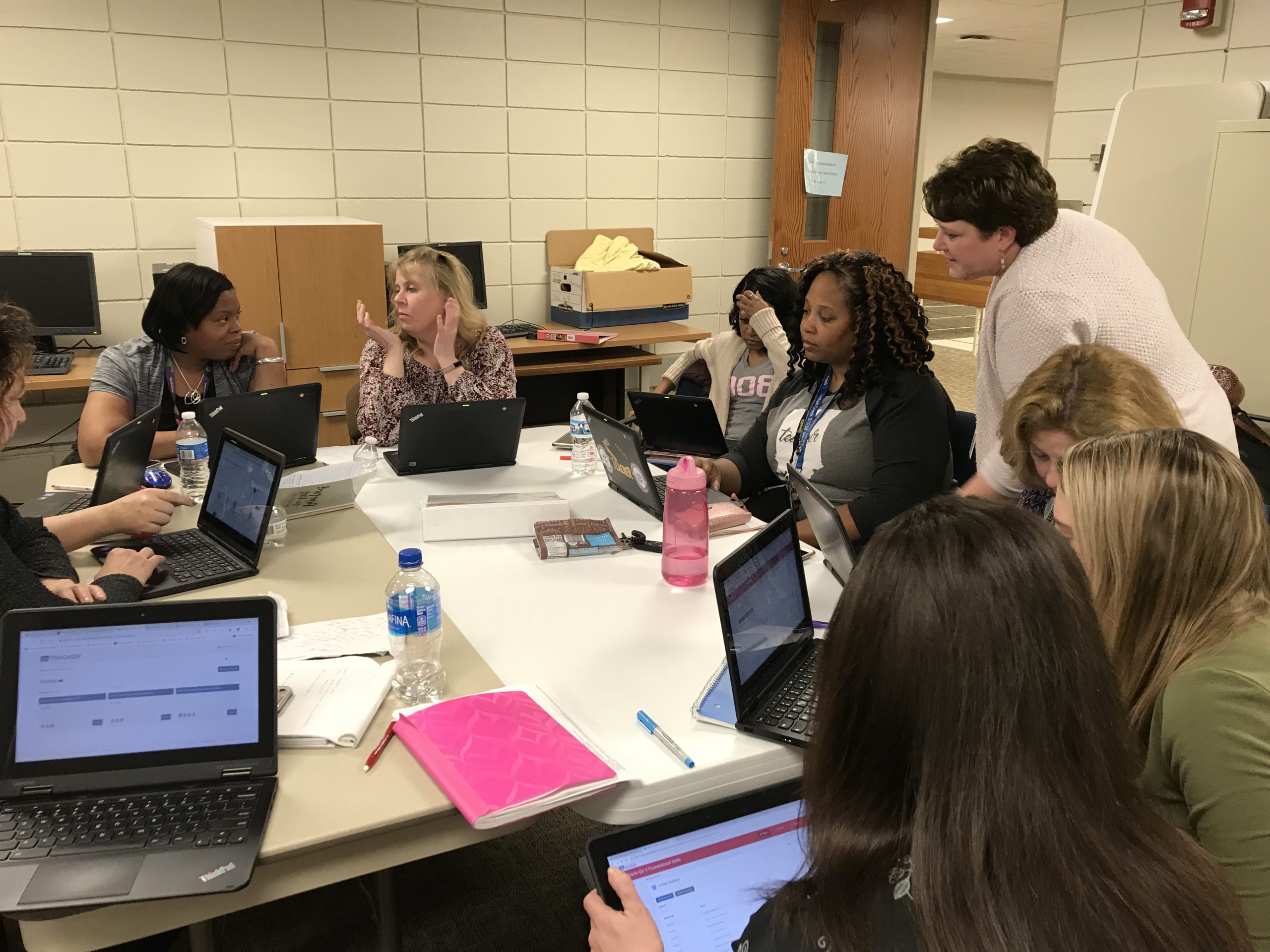District administrators want to adopt collaborative teaching models, but according to a RAND Corporation survey, only 31 percent of teachers have time to work with their peers. The two school systems featured here found ways to expand opportunities for teacher collaboration.
Collaborative teaching in North Dakota
In North Dakota, a fifth-grade educator realized her school didn’t have a formal art program. So she decided to work with another teacher in the Northern Cass School District #97 who taught the subject for grades 7 through 12.
The collaboration—the goal of which is to build an elementary art program—takes place during school hours because district leaders recently hired a full-time substitute, who comes in every day to fill in for teachers who wish to work together.
Related: Co-teaching PD at Northern Cass School District #97
“Finding subs is difficult since we are competing with two of the biggest districts in the state,” says Superintendent Cory Steiner of Northern Cass, located about 30 miles from Fargo. “With a full-time sub, we can keep that momentum going when teachers have an idea for collaboration.”
Administrators, including Steiner, can serve as subs as long as they have a few days’ notice. The district’s recently implemented personalized learning model makes this work. “I obviously can’t teach chemistry, but I can facilitate learning when students work independently,” he says. “I don’t think this effort would work if we were still using a traditional learning system.”
Finding time
Co-teaching has only occurred a few times at one Northern Cass middle school. Teachers who collaborate often brainstorm ideas or watch each other teach. Scheduling is completed via email or by leaving notes on classroom doors, a process that Steiner plans to formalize through Google Docs. “Teachers tell each other: ‘I’m looking for support, or I want to observe a class. I need someone with science expertise,’” says Steiner.
To co-teach, faculty participate in two days of training to learn effective practices and how to receive and provide constructive criticism.
Teacher collaboration in Indiana

An Indiana community wanted more teacher collaboration in its district. So Metropolitan School District of Lawrence Township officials set aside 45 minutes before and after school for teachers to meet three days per week.
“We have really provided teacher leaders the professional development and stipends to lead at that time,” says Troy Knoderer, the Indianapolis district’s chief academic officer. “We have teachers who are leading as part of the ‘D3 mode,’ leading their colleagues in a process of continuous improvement for student outcomes.”
Related: Benefits of collaborative teaching in Metropolitan School District of Lawrence Township
Under the district’s D3 (“Distributive, Dedicated, Dynamic”) program, specially trained lead teachers guide groups of educators in lesson planning and analyzing student performance data. These specialists, who comprise about a third of the teacher population and receive higher wages, originally didn’t co-teach with their teams. “Now that these leaders spend half their time in the classroom, our teachers who were reluctant about D3 are more willing to try it out themselves,” says Knoderer. “It gives our teacher leaders credibility.”
The district and Learning Sciences International also developed an annual summer PD program for the specialists.
While principals received training on how to identify teacher leaders in professional learning communities, the board of education and district superintendent worked with the teachers association to make D3 possible. “It was really about creating that shared vision of increasing teacher salary, taking advantage of the teacher leadership skills and getting that increased student achievement,” says Knoderer.
Interested in edtech? Keep up with the Future of Education Technology Conference®.







